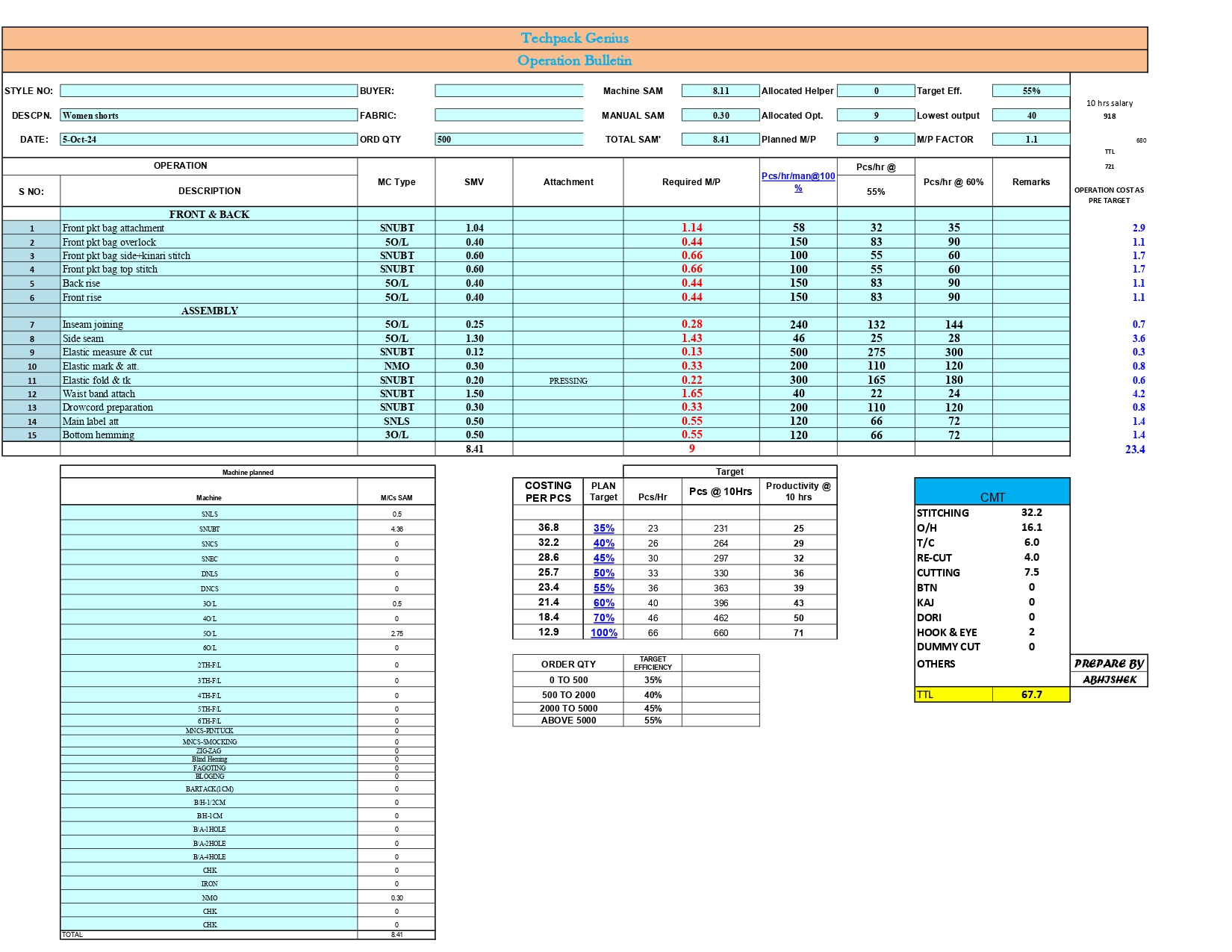Operation Breakdown of a Top
Introduction
A top is an essential garment in any wardrobe, offering a variety of styles, comfort, and functionality. Whether designed for casual wear, professional settings, or formal occasions, understanding its construction is crucial for both consumers and manufacturers. This blog post delves into the operational breakdown of a top, highlighting key aspects such as fabric selection, stitching techniques, design variations, and production processes.

Operation Breakdown

Fabric Selection
The choice of fabric plays a crucial role in the quality and purpose of the top. Common fabric options include:
Cotton: Offers breathability and softness, ideal for casual and everyday wear.
Silk: Provides a luxurious feel and shine, suitable for formal tops.
Polyester & Spandex Blends: Ensures flexibility and moisture-wicking properties, perfect for activewear.
Linen: Lightweight and comfortable, ideal for summer tops.
Pattern Cutting & Design
The design process starts with pattern cutting, ensuring the perfect fit and style. Key elements include:
Neckline Types: Round, V-neck, boat neck, or off-shoulder styles cater to different fashion preferences.
Sleeve Variations: Sleeveless, short sleeves, puff sleeves, and long sleeves offer different aesthetics and functionality.
Closures & Fastenings: Buttons, zippers, or hook-and-eye closures affect ease of wear and style.
Hems & Finishing: Rolled hems, raw edges, or stitched finishes contribute to the final look.
Stitching Techniques
High-quality stitching ensures durability and comfort. Common stitching methods include:
Overlock Stitching: Provides a clean finish and prevents fraying.
Flatlock Stitching: Used in activewear tops to minimize chafing.
Double Stitching: Enhances durability, especially in high-stress areas.
Production Process
The manufacturing of a top involves several stages:
Fabric Cutting: Precise cutting using automated or manual methods to match the design pattern.
Sewing & Assembly: Stitching different components together, including necklines, sleeves, and hems.
Quality Control: Checking for defects, ensuring proper stitching, and verifying fabric quality.
Finishing & Packaging: Final touches like pressing, labeling, and folding before distribution.
Conclusion
A top embodies a perfect blend of style and functionality. From fabric selection to the final product, every step in the production process contributes to its overall quality and durability. Whether you’re a consumer looking for the perfect top or a manufacturer seeking insights into production, understanding the operation breakdown of a top ensures informed choices and superior products.
